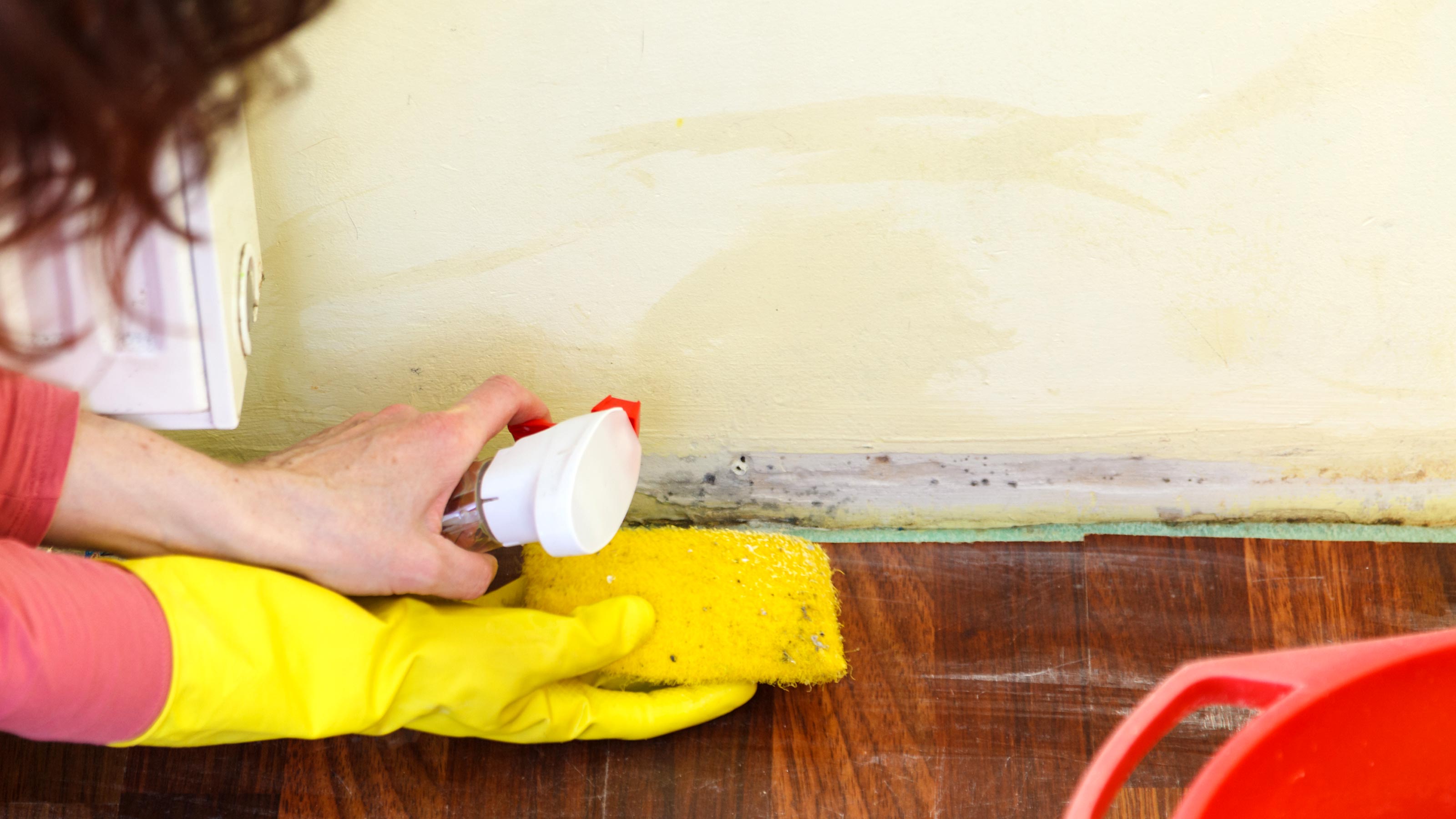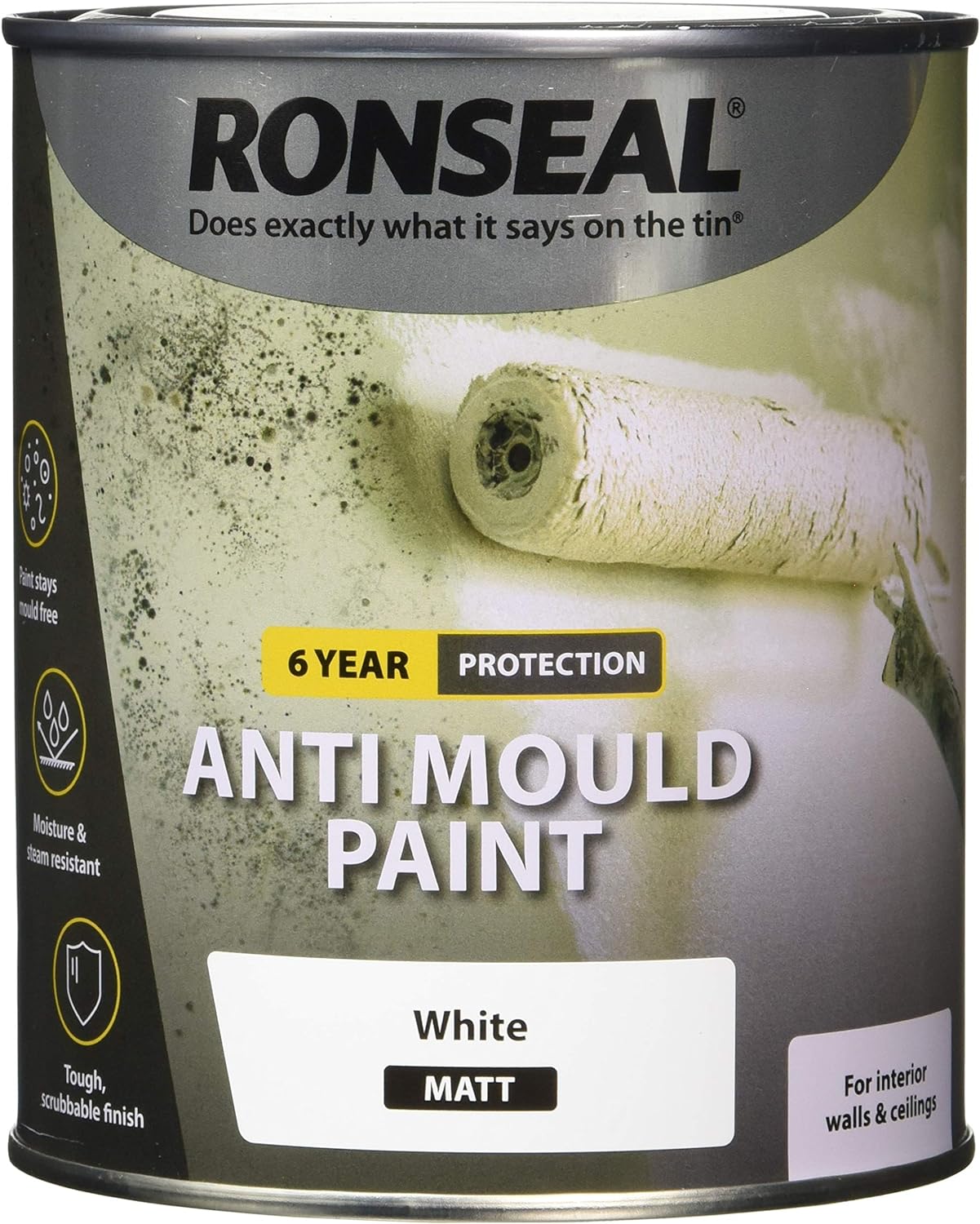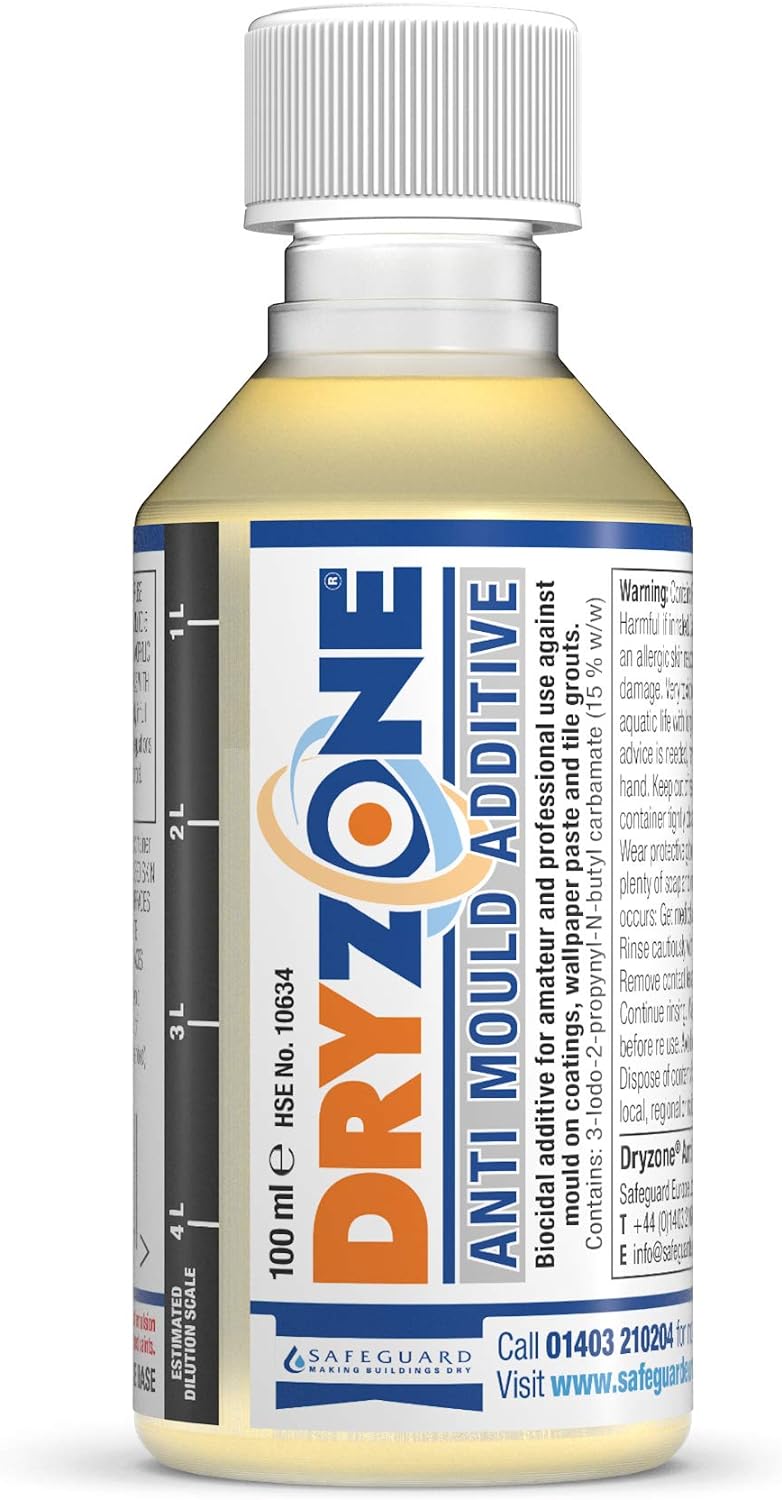How to remove mould from walls without damaging paint
Understanding how to remove mould from walls without damaging paint will mean that you can relax in the knowledge that your home is free from harmful spores at the same time as enjoying walls that look fresh and crisp

Keen to find out how to remove mould from walls without damaging paint? You wouldn't be alone.
Mould is ugly, unhealthy and needs to be dealt with quickly if you want to prevent it damaging your home and your health. The longer you leave the job of mould removal, the worse it will get and the further it will spread. For this reason, the minute you spot even the smallest patch of small black dots appearing on a wall you need to get on the case and start cleaning.
There can be a host of different reasons why mould is appearing on your walls — with condensation and leaking pipes being amongst the most common.
Whatever the reason, your first step should be to clean the mould up until the underlying problem is dealt with. Here, we explain how to deal with mould without leaving your walls in a bad way.
How to remove mould from walls without damaging paint
If your walls are painted with a colour it is best to use a solution that doesn't contain bleach. By the very nature of bleach it will most likely remove colour from the paint and leave an obvious patch on the wall which means painting a wall all over again.
To remove mould from a coloured wall it is a better choice to use warm water, a mild detergent like washing liquid and a kitchen scourer. Add a splash of washing up liquid to a bowl of warm water. Now soak the scourer and use the sponge side to wash over the affected area.
Next, wring out the sponge and wipe down the washed area and repeat until all the mould has gone and the wall is almost dry. Use kitchen roll to wipe the wall clean, with a fresh piece of kitchen roll for each wipe. Note this method only works well on surface mould.
Removing thick mould or mould from white walls
Surface mould on white walls can be removed using the non-bleach method above. But if the mould has penetrated further into the paint you can use a solution that contains bleach.
Make up a mixture of four parts water and one part bleach. When you have made up the bleach/water mixture add a squeeze or two of washing up liquid. Put into a squeezy spray bottle and apply to the wall. Use a kitchen scourer, use the sponge side first, and wash the wall. Repeat until all mould has been removed. Now dry with kitchen roll. The scourer side of the sponge can be useful for the stubborn areas such as bathroom ceilings. You can also use a mould killing product, such as HG Mould Spray from Amazon, which contains chlorine.
Any kind of water and scrubbing will take a very thin layer of paint off, so it might be worth considering painting a ceiling or wall after you have removed the mould — and addressed the problem that caused it.
Can vinegar remove mould from painted walls?
Vinegar is another option for getting rid of mould on walls. It is less harsh than bleach and does a good job of removing surface and ingrained mould, which makes it a good choice for coloured walls. But if you are cleaning painted white walls, bleach is a better choice.
Mix three parts water with one part vinegar and add a squeeze of washing up liquid. Spray onto the wall and wipe clean with a damp sponge and dry with kitchen roll.

Jimmy is senior product manager for Woodcare at Ronseal. He is responsible for ensuring that all of the products in the Ronseal Trade range perform as intended and deliver the results tradespeople require. He works closely with the Ronseal Trade research and development team to inform product updates and new innovations and provide professionals with a selection of reliable products for use across all jobs.
Your kit bag for removing mould from walls

Before starting decorating, you need to ensure walls are clean and completely free of any mould. HG Mould Remover works wonders at quickly removing mould, mildew and fungus from almost any surface — walls included.

Anti-mould paints are a great way to finish walls in a way that will prevent mould from returning — and come in a range of colours and finishes.
Ronseal anti-mould paint is both moisture and steam resistant and prevents many common types of mould from growing on walls or ceilings for up to six years. What's more, it also has a scrubbable finish.

Anti-mould paint additives are a brilliant way to allow you to select any kind of paint for your walls and turn it into one that will resist mould growth going forward.
Dryzone Anti-Mould Additive is a biocidal additive that gives paint, wallpaper paste and even grout mould-resistance for up to five years. Just mix into your paint of choice.
Even once you have removed mould from walls and ceilings, you should really look into what caused it in the first place — after all, according to a recent survey conducted by Homebase, a massive 85% of Brits have issues with mould!
There are multiple causes for the growth of mould, but they all have a common connection — moisture. Condensation is a regular reason for the growth of mould. This occurs where warm air comes into contact with cold surfaces and is common in bathrooms and on windows. Follow our how to stop window condensation guide which offers tips to keep windows dry.
Another leading cause is poor ventilation. And, finally, there may be more serious underlying problems such as a leaking roof, windows that need new caulking, leaking pipes or a broken down damp course.
Get the Homebuilding & Renovating Newsletter
Bring your dream home to life with expert advice, how to guides and design inspiration. Sign up for our newsletter and get two free tickets to a Homebuilding & Renovating Show near you.
Steve Jenkins is a freelance content creator with over two decades of experience working in digital and print and was previously the DIY content editor for Homebuilding & Renovating.
He is a keen DIYer with over 20 years of experience in transforming and renovating the many homes he has lived in. He specialises in painting and decorating, but has a wide range of skills gleaned from working in the building trade for around 10 years and spending time at night school learning how to plaster and plumb.
He has fitted kitchens, tiled bathrooms and kitchens, laid many floors, built partition walls, plastered walls, plumbed in bathrooms, worked on loft conversions and much more. And when he's not sure how to tackle a DIY project he has a wide network of friends – including plumbers, gas engineers, tilers, carpenters, painters and decorators, electricians and builders – in the trade to call upon.

